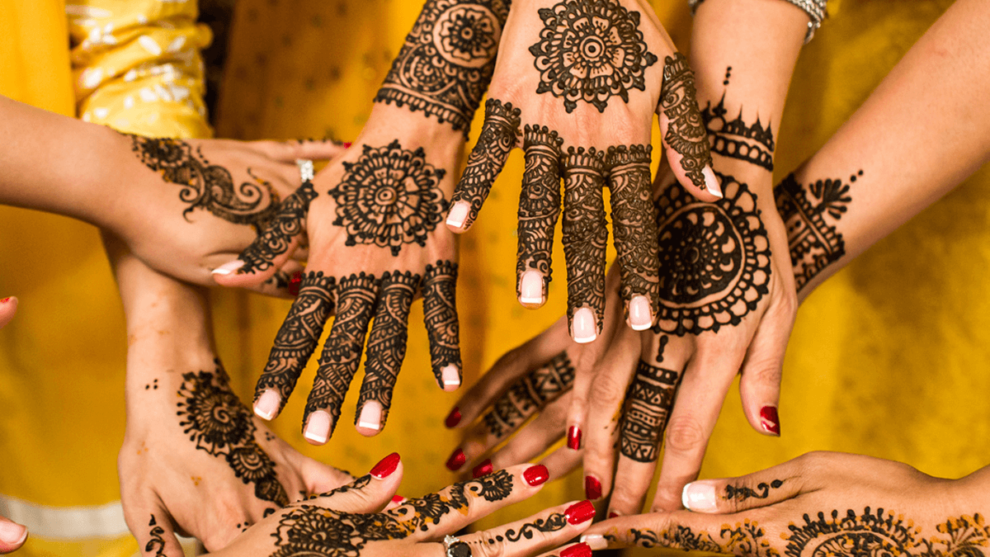THE ORIGIN
Henna is an organic paste that people use to make body tattoos. The paste itself comes from a tropical plant called Lawsonia Inermis. The leaves and twigs of the henna plant are crushed into a very fine powder and this powder is then made into a paste to give you the smooth henna finish.
Henna artists often use essential oils into these pastes too.

TRAVELING FROM THE EAST TO THE WEST
Henna tattoos are having major beauty moments all over the world. You can be sure to see them over festive seasons or nearly on any random occasion. Henna is no longer just limited in South Asian heritage but it’s also becoming a lot popular across the western culture. Social media plays a huge role in popularizing henna globally as many celebrities were seen to adorn themselves in it.
HENNA ART
Henna has many beneficial properties and is often used in different parts of the body as a form of art.
Henna on Hair
For a smoother and shinier hair applying henna on your hair can do wonders.
Fingertips and Nails
Henna can often time be applied on the fingertips to draw more attention as well as on the nails as nail polish or for simply protecting your nails from chipping or breaking.

Protecting Your Feet
Henna is an excellent paste to help keep your feet clean and conditioned, leaving the skin soft to the touch.

Getting Creative
Other known places where you can apply henna include
▸ Neck (a sleek design on both sides of the collar bones is a great choice)
▸ Back
▸ Arms and shoulders
▸ Thighs and legs
▸ Belly (or more common way of knowing as henna belly art, is used by soon to be mommies to celebrate their motherhood)
TYPES OF HENNA
There are typically three different colors of henna. Brown, white and black.
Brown Henna
Brown hennas, also known as organic hennas, are the most common ones that you see all the time. These hennas are also known as the safest ones. Ranging from an orange to a maroon shade, the stains of brown hennas can last for about two to three weeks.
White Henna
White hennas don’t come from the plant like regular natural henna. It doesn’t embed itself into the skin as it’s just on the surface. This color of henna uses a mixture of somebody paint, body adhesive, and latex. It stays for about three to four days and comes off much quicker if it’s scrubbed off.
Black Henna
Black hennas are also known as chemical hennas and contain some very harsh chemicals. It can be harmful to the skin at times and can cause allergic reactions.
So, it’s better to avoid black hennas for the sake of your skin.
Henna is probably the only cosmetic that can be kept for weeks without needing any reapplication. This form of art can be innovative and a fun thing to learn at any point in your life. And if you simply enjoy getting hennaed, you can try out the stated ones and get creative!






